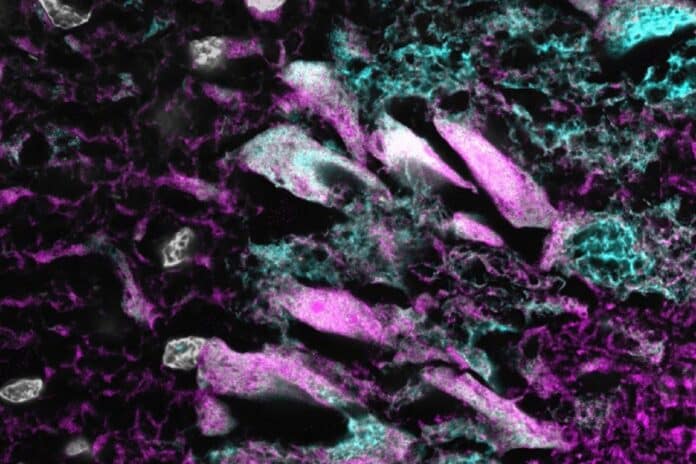The brain floats in a sea of Cerebrospinal fluid (CSF) that protects it from injury. It supplies nutrients and removes waste. Disturbances in normal fluid flow are associated with neurological disorders such as Alzheimer’s disease and hydrocephalus. A disorder in which there is too much fluid in the brain.
CSF is essential for the development and function of the central nervous system.
Researchers at Washington University School of medicine in St. Louis have developed a new technique to track the fluid circulation patterns in the brain. They discovered in rodents that the fluid flows to areas critical for normal brain development and function. The scientists also found that circulation appears abnormal in young rats with hydrocephalus, a condition associated with cognitive deficits in children.
These findings are published online in Nature Communication. They suggest that the fluid that washes around the brain is known as cerebrospinal fluid. It may play an underappreciated role in normal brain development and neurodevelopmental disorders.
Jennifer Strahle, MD, an associate professor of neurosurgery, pediatrics, and orthopedic surgery, said, “Impaired CSF dynamics may be responsible for the changes in brain development we see in children with hydrocephalus and other developmental brain disorders.”
A pediatric neurosurgeon Strahle said, “Our next steps are to understand why the CSF flows specifically to these neurons and what molecules in the CSF are transported to these areas. Growth factors in the CSF may interact with these specific neuron populations to mediate development, and disrupting these interactions could lead to different disease outcomes.”
The scientist also said, “The idea that CSF can regulate neuronal function and brain development is not well understood.”
Hydrocephalus often leads to cognitive dysfunction that persists after successfully draining the excess fluid. The disrupted CSF dynamics in these brain functional regions may ultimately affect brain development. Normalizing CSF flow in these areas is a potential approach to reducing developmental problems. It is an exciting field, and they are just beginning to understand the multiple functions of CSF.
They treat children with hydrocephalus at St. Louis Children’s Hospital. “A whole host of neurological disorders in young children, including hydrocephalus, are associated with developmental delays. The underlying cause of developmental delays is unknown in many of these disorders. It is possible that in some cases, there is altered function of the brain regions through which cerebrospinal fluid circulates.”
Strahle, Shelei Pan, an undergraduate student, and her colleagues developed an X-ray imaging technique using gold nanoparticles to visualize the brain’s circulation patterns in microscopic detail. Using this method, they showed in young mice and rats that cerebrospinal fluid enters the brain through small channels primarily at the base of the brain, a pathway not observed in adults. In addition, they found that CSF flows to specific functional areas of the brain.
Further experiments showed that hydrocephalus reduces CSF flow to specific neuron groups. Strahle and colleagues studied a form of hydrocephalus in some premature infants. Premature infants tend to have brain hemorrhages around birth that can lead to hydrocephalus and developmental delays.
Strahle and her team triggered a process in young rats that mimics that seen in premature babies. After three days, the tiny channels carrying CSF from the brain’s outer surface to the center were fewer and shorter, and blood flow to 15 of the 24 neuron clusters was significantly reduced.
“These functional areas contain specific collections of cells, many of which are groups, and they are connected to important anatomical structures of the brain that are still developing.”
Journal Reference:
- Jennifer M.Strahle, Pan, et al. Gold nanoparticle-enhanced X-ray microtomography of the rodent reveals region-specific cerebrospinal fluid circulation in the brain. Nature Communications. DOI: 10.1038/s41467-023-36083-1
